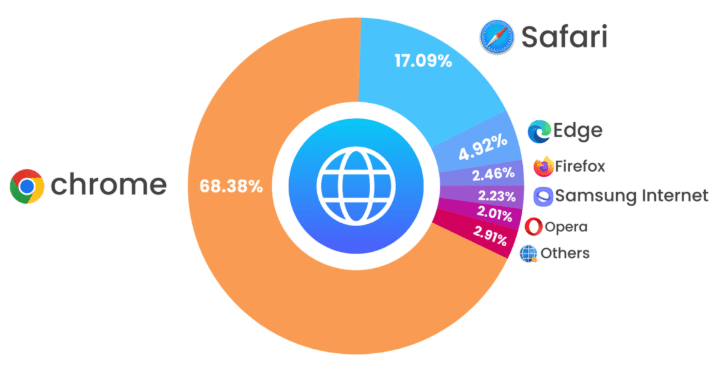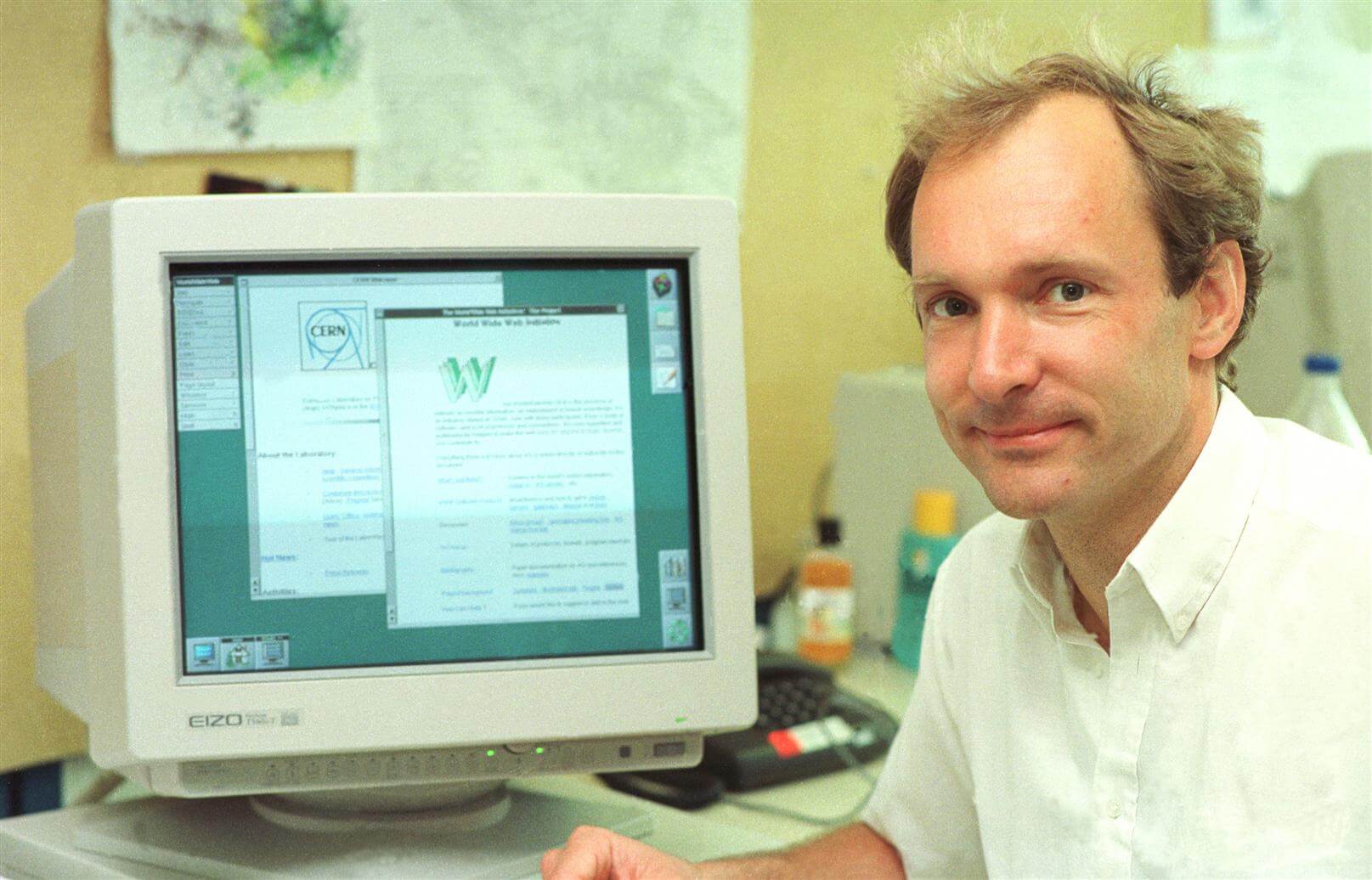History of the Web & Browsers
Milestones, evolution, trends & future.
Introduction
The World Wide Web (WWW) has been an important tool for getting and sharing information around the world since it was first made. It has changed schools, given businesses more power, and given people a great way to share information. Browsers are the doors to the Web, and they have been essential in making information easy to find online. Experts say that the Web is one of the most important new technologies since the printing press, and it has the power to change the future of society in big ways [1]. This article looks at the history of the Web and its browsers, pointing out important events, big changes, current trends, and where this important technology is going in the future.
Early Foundations of the Web (1989-1990)
The European Organization for Nuclear Research (CERN), which hosted more than 17,000 scientists from more than 100 countries in 1989, is where the World Wide Web got its start. British scientist Tim Berners-Lee proposed a "distributed information system" to help researchers around the world share information efficiently. This system was later formalized in 1990 as the World Wide Web, a hypertext project that allowed interconnected documents to be accessed via "browsers," with the help of Belgian engineer Robert Cailliau. Berners-Lee created the first web browser and server on a NeXT computer at CERN by the end of 1990. In addition to introducing the project, the first website, located at info.cern.ch, offered fundamental instructions for using and navigating the early Web [2].
Browser Development and Global Expansion (1991-1994)
Tim Berners-Lee's original Web browser, which was developed at CERN, was compatible with NeXT computers and enabled direct page viewing and editing. Access was restricted due to the scarcity of NeXT machines. Nicola Pellow created the line-mode browser, which could operate on any system, to increase accessibility [2]. The WWW software, which included the developer libraries, server software, and line-mode browser, was released by Berners-Lee in 1991. The Web's evolution from a research project to a global platform began in March when it was made available to CERN colleagues and in August when it was made public through Internet discussion groups. The Stanford Linear Accelerator Center hosted the first Web server in the United States by December 1991. Accessibility was further increased by the development of early browsers for research platforms, including MIDAS, Viola, and Erwise [2].
Marc Andreessen, then an undergraduate at the University of Illinois, released Mosaic at the National Center for Supercomputing Applications (NCSA) in early 1993; it was a major milestone. The first popular graphical browser was called Mosaic, and it was first developed for UNIX before being ported to Windows and Macintosh. Users had access to early web pages, chat rooms, and image libraries because it was freely distributed. Because of Mosaic's popularity, Andreessen co-founded Netscape, which went on to market it as Netscape Navigator, the first publicly accessible browser. Later, Netscape released its source code as Mozilla, which became the foundation for Firefox, a free and open-source browser [3]. The release of Mosaic also coincided with the lifting of restrictions on commercial Web traffic, paving the way for the mid-1990s .com boom.
The Web became an open platform on April 30, 1993, when CERN made the WWW source code available without charge. More than 500 web servers were identified by the end of 1993, and they accounted for around 1% of all Internet traffic. By the end of 1994, the Web had more than 10,000 servers and 10 million users, and hundreds of people attended the first International WWW Conference held at CERN. Berners-Lee established the World Wide Web Consortium (W3C) at MIT to guarantee that the Web would remain an open standard, and soon after, partners from Europe and Asia joined. W3C had over 400 member organizations worldwide by 2018 [2].
Browser Wars and the Evolution of Browsers
The first browser war broke out in the mid-1990s between Microsoft Internet Explorer, which came with Windows, and Netscape Navigator, which was released in 1994. Rapid innovation was sparked by this competition, leading to the introduction of new features like multimedia support, JavaScript, and Cascading Style Sheets (CSS). Microsoft Internet Explorer eventually took the lead by the early 2000s, but the competition sped up the development of web technologies and standards [3] - [4].
The emergence of Mozilla Firefox, Google Chrome, Apple Safari, and other rivals in the mid-2000s marked the start of a second browser war. This stage moved the emphasis from market share to user experience and innovation by emphasizing speed, security, extensions, and standards compliance. As an open-source browser, Firefox impacted modern browsing habits and challenged corporate dominance. The strong, adaptable browsers we use today were ultimately shaped by these two waves of competition, which resulted in the advanced platforms that were accessible in 2025 [5].
Modern Browsers in 2025
By 2025, a small number of powerful companies control the majority of browsers, with an emphasis on cross-platform compatibility, speed, security, and privacy. Google Chrome holds the largest market share, followed by Apple Safari, Microsoft Edge, Mozilla Firefox, and Opera [6]. These browsers offer a smooth experience on PCs, laptops, tablets, and smartphones by supporting cutting-edge web technologies, AI integrations, and improved developer tools. The current distribution among users worldwide can be seen visually by comparing the market share of different browsers.

Key trends shaping the future of browsers include:
- AI Integration: More and more, browsers are using AI to make the user experience better. For instance, Microsoft Edge has a "Copilot Mode" that uses AI to help users with tasks like summarizing content and managing tabs [7].
- Privacy and Security: People are more worried about privacy these days, which has led to better tracking protection and safe browsing modes.
- Performance Enhancements: Browsers are getting faster and better at handling the growing complexity of web apps and content.
- Modern Web Design Trends: 2025 web design trends emphasize data security, quick loading times, intuitive navigation, and visually appealing experiences. Bold expressive fonts, immersive scrolling animations, micro-interactions, motion design, sustainable web design, voice-activated interfaces, dark mode, data visualization, and interactive 3D content are some of the major trends [8].
- Personalized and Adaptive Experiences: Websites now use smart content loading, geolocation, and browsing history to adapt based on what each user wants. This trend focuses on interactions that are human-centered, interesting, and easy to understand across devices [8].
Future Outlook
Modern browsers are now more capable and intuitive than ever thanks to the quick development of web technologies. In order to provide even more comprehensive and powerful experiences, browsers will continue to develop in the future by incorporating new technologies.

